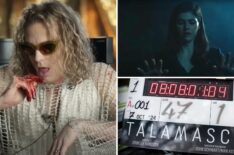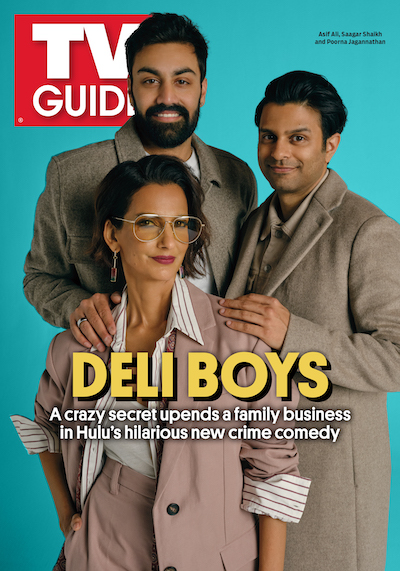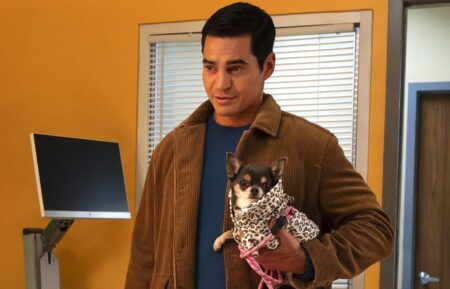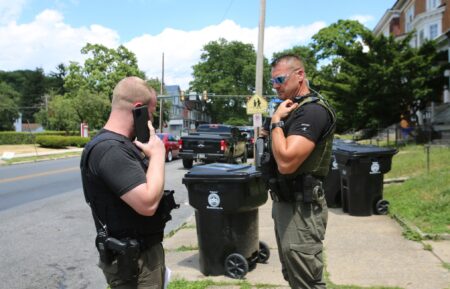‘IWTV’ Season 3: The One ‘Vampire Lestat’ Book Scene We Desperately Want to See

[Warning: The following contains MAJOR spoilers for The Vampire Lestat book, on which Interview With the Vampire Season 3 will be based.]
There’s one character from Anne Rice’s The Vampire Chronicles who has never been included in any of the onscreen adaptations so far: Gabrielle de Lioncourt, Lestat’s mother and his very first fledgling. That’s going to change in AMC‘s Interview With the Vampire Season 3, which is currently being written. Next to Sam Reid‘s Lestat, Gabrielle is going to be “the central character of Season 3, the most important character,” showrunner Rolin Jones previously told TV Insider. Fans (and I) are chomping at the bit to find out who will play her, but stronger than my desire for this casting announcement is my desire to see one particular Gabrielle book scene come to life in this upcoming adaptation of The Vampire Lestat, which will mark the first time the hit sequel novel has been adapted in-depth.
Today, November 7, is Lestat’s birthday, so there’s no better time to have a think on his origins, why he does what he does. There are few characters in The Vampire Chronicles that have such a deep impact on present-day Lestat as his mother, so let’s dive into why the Gabrielle haircut scene is so important.
Taking place in the first half of the book, the scene in which Gabrielle tries to cut her hair post-vampire transformation is key to understanding the character. She hardly says a word in it, but Rice’s prose is so evocative that her feelings are palpable even when observed through Lestat’s point of view. It’s the kind of scene that Interview With the Vampire actors are uniquely equipped to make a meal out of, and it provides a great opportunity for the series to further explore gender identity, a topic that has primarily been addressed through undertones thus far.
For those who haven’t read the Rice books, The Vampire Lestat may surprise you with how little time it spends talking about the events of Interview With the Vampire. Before that, Lestat tells the story of how he became a vampire and his undead life after, starting in the months before his transformation in 1700s Paris and extending through the 1980s (the book’s present day). We already got a glimpse of Lestat’s origins in Season 2 Episode 3, “No Pain,” but it was told from Armand’s (Assad Zaman) perspective, and he intentionally excluded Gabrielle. Viewers will find out why in Season 3, Jones told us.
Lestat’s mother is an Italian noblewoman who married into a French family. Unhappily married to the Marquis de Lioncourt, Gabrielle never really wanted to be a mother but gave birth to seven children. Only three of them lived to adulthood, Lestat being the youngest of those sons. They lived in the Auvergne region of France, and despite Gabrielle being well-educated, her sons were illiterate. Lestat eventually learned at a monastery where he thrived, but his cruel father and brothers cut that short and forced him to return home. Gabrielle hated her assigned gender role and the social limitations that came with it. She called Lestat the man she could never be, often referring to him as her “phallus” (their relationship gets much weirder, but that’s a topic for another day). When she fell fatally ill, she urged her favorite child to leave for Paris with his love, Nicolas de Lenfent (played in the show by Joseph Potter, seen below with Reid) to live the life he wanted. While this was an act of love for Lestat, she was also living vicariously through him.
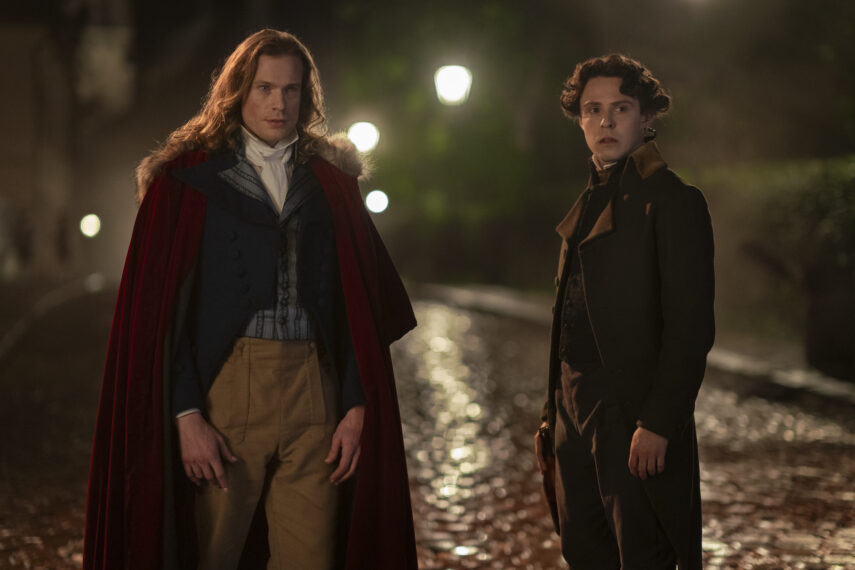
Sam Reid as Lestat and Joseph Potter as Nicki in Interview With the Vampire Season 2 Episode 3, “No Pain” (Larry Horricks / AMC)
Months later, Gabrielle went to see Lestat one last time before she died. He was already a vampire when she got there, having been transformed against his will by the evil vampire Magnus (his transformation was briefly addressed in Season 1 Episode 6). Lestat almost didn’t go see his mother in her final moments because he so feared her seeing him in his new form, but he turned her into a vampire to save her life. Gabrielle then uses vampirism to create the life she always wanted.
The first book and first two seasons primarily explore queerness through sexual orientation, but Lestat’s “I am she, she is me” line in the Season 2 finale should have sparked curiosity about his gender identity. Claudia (Bailey Bass and Delainey Hayles) was traumatized by her body that wouldn’t age with her mind, but she never expressed discomfort with her gender specifically (the 1994 movie does reference the haircut scene in a memorable moment with Kirsten Dunst‘s Claudia). The Vampire Lestat uses Gabrielle to show another side of the horror that is being stuck in a body you desperately want to change but can’t, creating a parallel between Claudia and her de facto grandparent.
Lestat describes Gabrielle as having very feline features that were “too small, too kittenish” and “made her look like a girl.” She never explicitly says that she wants to be a man, but she rejects femininity entirely the second she’s imbued with immortal power and comports herself as a man from that point on (feminine pronouns are still used for the character throughout). During their first hunt as maker and fledgling (a change that forever blurs the lines between their mother-son dynamic, but again, that’s a different topic for a different day), Lestat is shocked when his mother opts to kill a man and steal his clothes to wear instead of donning the extravagant dress he found her. She tucks her hair into her new hat and later cuts it all off as a continuation of her masculine style.
The next morning, she screams in terror to find that it all grew back. Gabrielle has a panic attack as the realization sinks in that her physical appearance at the time of her transformation is how she will look forever. Vampirism healed her illness and now she can live forever. She has the power to be free of all social confines, but she will never be free of femininity. One of Lestat’s most endearing moments comes next, when he tries to comfort Gabrielle by telling her he will cut her hair every single night if she asks him to. It’s one of the first examples of Lestat not being the soulless, narcissistic monster that Louis previously described. He would do anything to help those he loves be themselves without apology.
Gabrielle gets her bearings with vampirism and goes on to share powerful insight about how the dark gift can be used to find the meaning of life. Adventure, exploration, and curiosity are her and Lestat’s compass, and they won’t be beholden to a coven, no matter how much Armand insists they conform. When Zaman’s Armand said “you cannot script a hurricane,” there’s no doubt in my mind that he was thinking about Gabrielle as well. As time passes, Gabrielle wants more and more to disconnect from all ties to her mortal life, including the fact that she was ever a mother. This puts a strain on Gabrielle and Lestat’s relationship, one that leaves Lestat deeply emotionally wounded. This wound is still festering when he meets Louis.
While Rice didn’t label Gabrielle as such in the books, it’s clear that Gabrielle is trans. Whatever gender exploration the series depicts with Lestat in Season 3 would only be enriched by having this haircut scene as part of its foundation. It’s also just a beautifully sad, tender moment that makes your heart bleed for Gabrielle more than any other scene in this novel. For me, there’s no better Gabrielle moment in The Vampire Lestat. I can’t wait to (hopefully) see it onscreen.
Interview With the Vampire, Season 3, TBA, AMC
From TV Guide Magazine
Crime, Comedy & Convenience Stores: Unwrapping Hulu's 'Deli Boys' With the Cast
Cupcakes, corndogs…and cocaine?! Two brothers find themselves in a hilarious pickle when they inherit an unseemly bodega biz in Hulu’s new comedy Deli Boys. Find out how The Sopranos and Real Housewives of Orange County influenced the cast. Read the story now on TV Insider.



